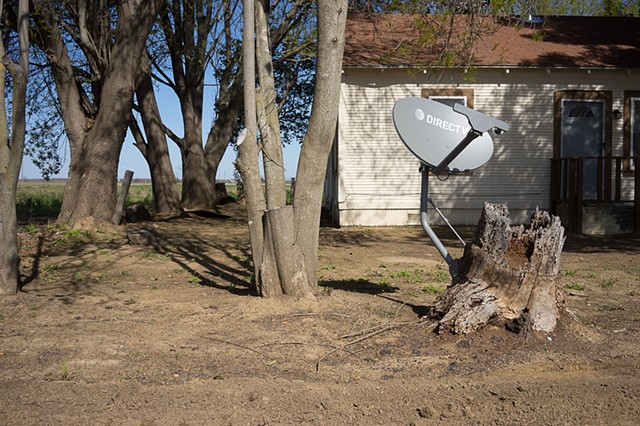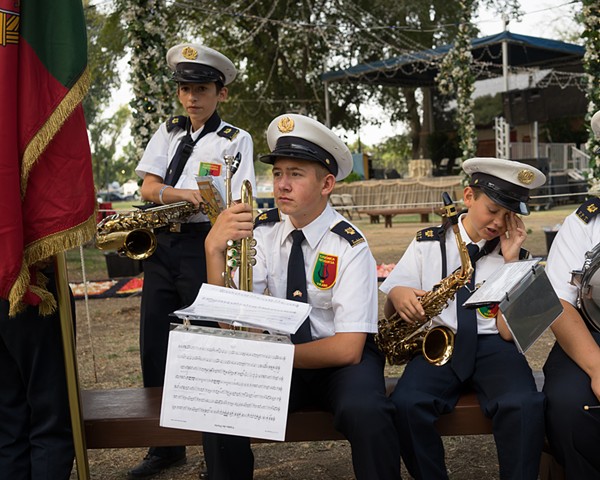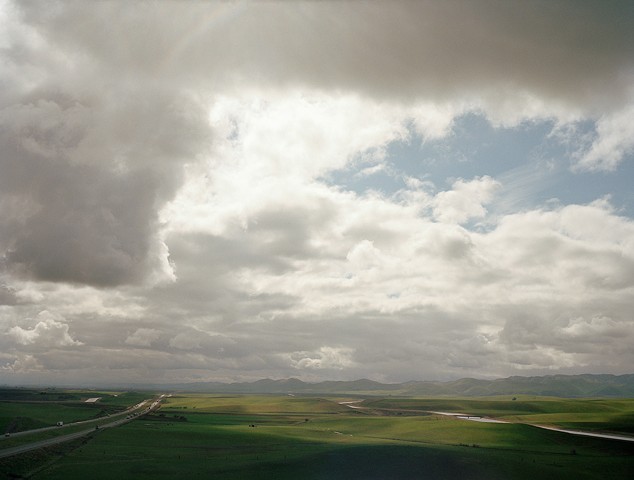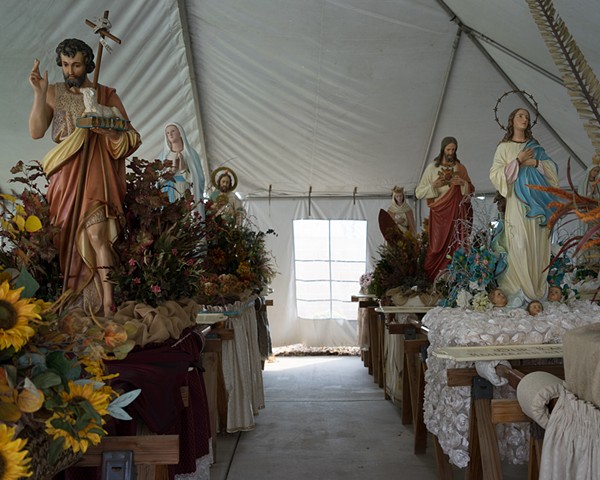The Cattle King's Daughter
Gustine is a town in the Central Valley of California. It is where my mother and many of my cousins grew up, and where my grandfather and his siblings ranched cattle and worked for Borden's Creamery. It is a small town, like many in this country, that the young generation leaves when it comes of age. It is located five miles east of Interstate 5, so while you remember the sign if you've driven that road, you've never been there. It is smack dab in the middle of the agricultural bread basket of the western United States, in the midst of the longest drought in modern history, where nobody drinks the tap water, and it and neighboring towns have commercial pay stations for drinking water. It is also the home of one of the largest Portuguese Festas in the country.
A town with no hotels, the streets are lined with large trailers and RVs for a week each September. People's front yards become cafeteria-like, with enough card tables to feed 15-30 visiting relatives from as far away as Canada. Music emanates from many side streets--small gatherings of members of up to six visiting Portuguese marching bands. So many pilgrims fill this tiny town of 6000, that the Catholic Archdiocese declared the Our Lady of Miracles Church a shrine in 2008. While these festivals are declining or being pared down in many communities, because of declining budgets and church membership, Gustine's Festa grows each year.
The community sees the different activities of the celebration as ways to create living stories to help attract the ever-drifting younger generation to come home, and carry forth the teachings of their Catholic upbringing. Five parades/processions occur in a two day period, starting with the Bodo de Leite in which Portugeuse agrarian culture is featured, by the marching of steers pulling traditional wooden carts, children and adults in traditional dress, musicians, and float after float of live depictions of the calling of each saint, from the patron saint of the sick and dying, to the patron saint of confession. This parade terminates in the town square, where a stage and alter are constructed for both services and performance of traditional dance and song, and in another part of the park, a benefit auction of cows and bull semen. Later, on Monday, agrarian traditions are celebrated another time with traditional Portuguese bullfighting. As a cultural happening, the (bloodless) bullfights, normally illegal in California, are permitted.
After mass in the evening, the congregation and pilgrims silently process with candles (many barefooted) from the shrine to the town square again, in a silent walk, with the Monsignor calling out prayers on a loudspeaker, followed by the statue of the Nosso Sinhora dos Milagres. As one pilgrim told me, 'She is never alone. She is always with us.'
Dozens of Pentecostal queens and their courts wearing exquisite costumes, crowns, and ten foot trains, parade from the park on Sunday morning. Led by the Gustine High School Marching Band, each visiting church leads their group with a banner bearing the name and location of their parish, and the founding date. Small children carry banners with the names of the young queens and their courts. They are interspersed with visiting bands, and the Gustine royalty ends the parade, leading the Nosso Sinhora back into the church.
So many have now gathered, that the overflow tent on the church grounds cannot accommodate everyone for the high mass. Princesses and courts, listen to the mass on a loudspeaker in a scene that mimics a Seurat painting, on the great green lawn of the parish school next door. The Nosso Sinhora will journey twice more on this day, back to the park following icons of sixteen saints, carried by multiple generations of families, who've carried them on this Sunday for generations. And finally at midnight, by candlelight, back with her barefoot followers, who depart for college, their jobs, or back to far flung parishes, until next year.

























































